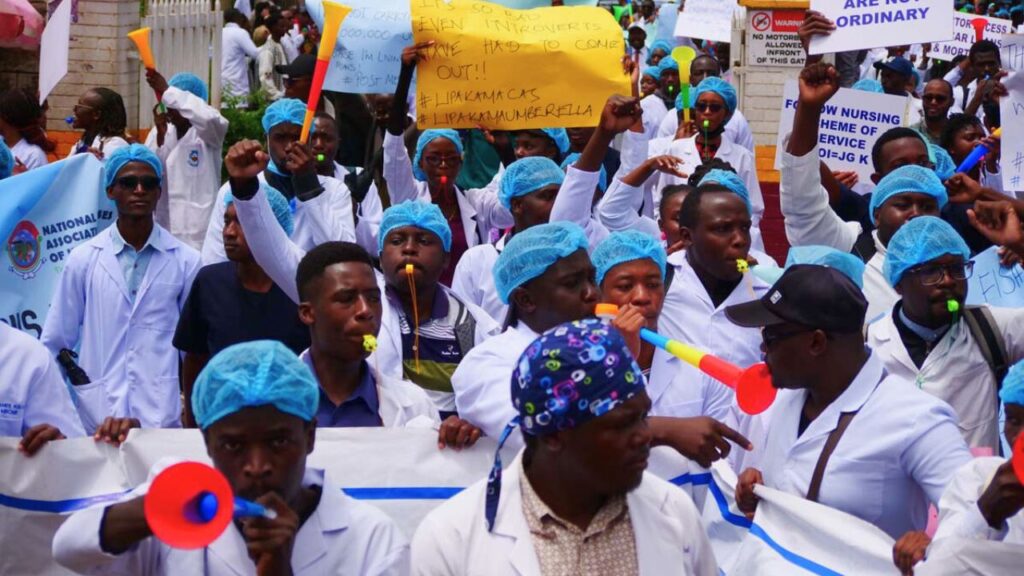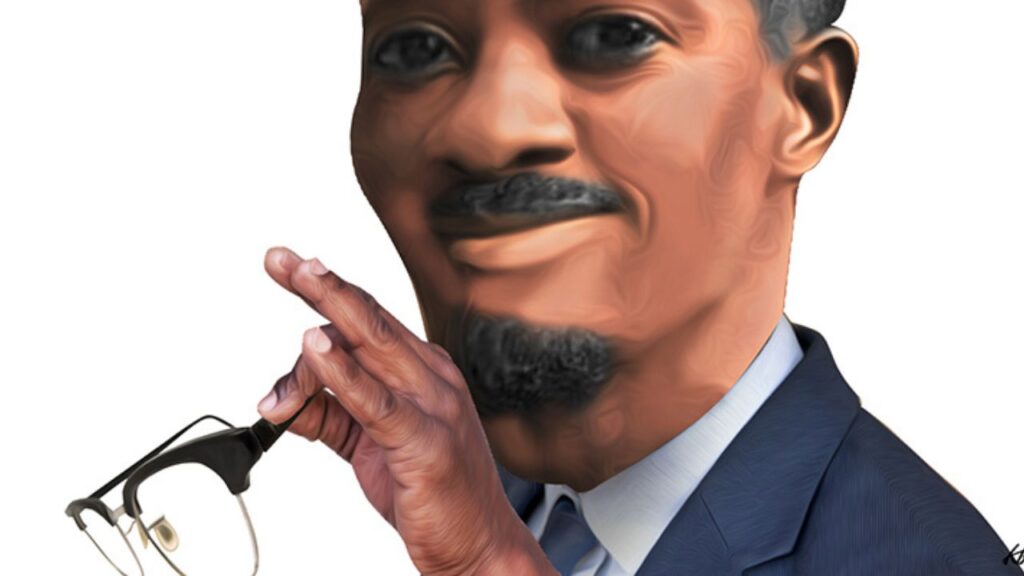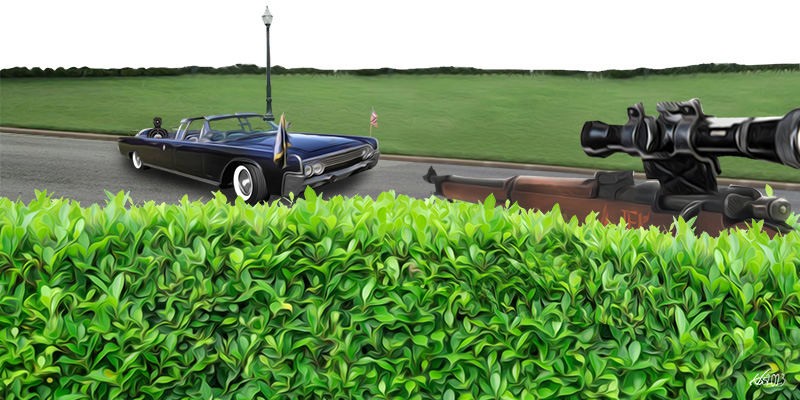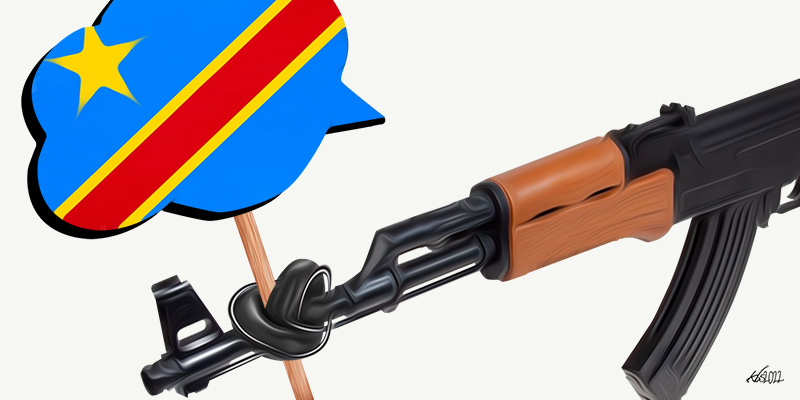Africa has recently been in the global news for the right reasons when the Vice President of the United States, Kamala Harris, embarked on a week-long trip to Ghana, Tanzania and Zambia in late March 2023. Accompanied by her husband, Douglas Craig Emhoff, also known as the Second Gentleman of the US, Harris undertook a trip that was not only significant to Africa but also to the US, considering China’s growing influence on the continent in the last few decades. While visits by government officials to friendly or not too friendly nations are typical of the practice of diplomacy, VP Harris’ visit, as some have argued, is strategic and part of President Joe Biden’s commitment to his “all-in on Africa” strategy that he announced during the US-Africa Leaders Summit held in December 2022.
The visit is part of the series of visits by top officials of the Biden administration’s new engagement with Africa. From Secretary of State Antony Blinken’s visit to Ethiopia and Niger in March 2023 to Treasury Secretary Janet Yellen’s visit to Senegal, Zambia and South Africa, and to First Lady Jill Biden’s visit to Namibia and Kenya in February 2023. It is clear that these vital visits fall within the “strategic reframes” of Africa’s importance to US national interests as captured in a White House document titled “U.S. Strategy Toward Sub-Saharan Africa”. Secretary Blinken notes, as captured in the strategic document, that “Africa will shape the future—and not just the future of the African people but of the world.” The document also underscores the importance of African agency and voices on consequential global conversations. The emphasis on African agency sounds interesting, but the question worth asking is whether or not Africa has received the recognition it deserves on the so-called consequential global conversations.
This question raises further questions about the timing of the recent visits by senior US government officials, including the visit by VP Harris to Africa. For some, US engagement with Africa in the past decades has been fluid, unduly security-driven, and generally, for the most part, inconsistent, while China has effectively demonstrated laser-sharp consistency regarding the development of trade relations. For instance, it has historically, sponsored massive infrastructure projects such as the 1976 Tan-Zam railway that runs from Dar es Salaam to Kapiri-Mposhi in Zambia, and more recently—even more ambitiously—China has been engaged in grand road-railway projects and other digital infrastructure projects on the continent. Although the Biden administration is unwilling to admit that its active re-engagement with Africa has to do with countering China’s rising influence on the continent, the evidence suggests otherwise. To understand the historical context of US-Africa relations vis-à-vis China’s rising and assertive influence in Africa, the next section discusses US-Africa relations and the apparent pre-eminence of Sino-Africa diplomatic and trade relations.
Overview of US-Africa relations and Sino-Africa engagement
Historical relations aside, for most of the 20th century, US-Africa relations were dictated—and calibrated—by Cold War considerations that were not always advantageous for African nations. For the past two decades, especially in the post-9/11 era, geopolitical strategic calculations have shaped, and continue to shape, US-Africa relations. Following the 9/11 attacks, under the presidency of George W. Bush the US was at the forefront of an international coalition against global terrorism, and specifically fighting two major wars in Iraq and Afghanistan, and its extended version to defeat the Islamic State (IS) in 2014.
Based on its strategic commitment to fight the so-called global war on terrorism, US-Africa relations have been largely confined to, and defined by, America’s national security priorities, which include making budgetary provisions to bolster security in various regions of Africa with manifestations of al-Qaeda and al-Qaeda in the Lands of the Islamic Maghreb (AQIM), IS, and loose affiliates such as Boko Haram in Nigeria, and Al Shabaab in Somalia and Kenya, and other militant Islamist groups in Mali and Burkina Faso. One of the geostrategic culminations of this national security-driven foreign policy or engagement in Africa was the establishment of the United States Africa Command (AFRICOM) in 2007. With the increasing “Cold War-like rivalry” between the US and China, how likely are we to see this Euro-American military presence in Africa morph into something more than just the containment of radical Islamic movements but also checkmating China on the continent?
While the US was rolling out its global security edge and presence around the globe, and in Africa in particular, the People’s Republic of China was reading from a different “global commercial presence rule book”. And so, during this same period, China has been playing a long-term game plan, namely the global strategic acquisition of vital resources such as minerals, metals, crude oil, and agricultural products. With this global strategic resources “game-plan” in mind, China quietly formed the Forum on China-Africa Cooperation (FOCAC) that, as of 2022, featured the membership of all African nations, except Eswatini. President Hu Jintao treated the world to a rare spectacle when he hosted, in 2006, the first FOCAC Summit that brought a historic thirty-five heads of states and governments to Beijing, marking the entering of the high-water mark of multilateral and bilateral commercial relations and underpinning a new era of China-Africa relations.
One of the geostrategic culminations of this national security-driven foreign policy or engagement in Africa was the establishment of the United States Africa Command in 2007.
Later, Chinese Premier Wen Jiabao would propose an accelerated trade program increasing China-Africa trade from its US$10 billion 2000 threshold to US$100 billion by 2010. To underscore the importance of Africa to China, and the latter’s role on the continent, President Jintao announced a US$20 billion pledge in credit at the Beijing-Africa Summit held in 2012 that was attended by 50 African leaders. With China’s increasingly aggressive role, and commercial manouevres across the continent, it comes as no surprise that the Africa-China trade volume reached an all-time high of US$254 billion in 2021, 35 per cent up from the previous year. Yet, all this represents only 4 per cent of China’s global trade. At this rate, therefore, the Africa-China trade volume can only be expected to grow in leaps and bounds. While the US has been upping its game and flexing its diplomatic commerce muscles by “following” China’s example of hosting the U.S.-Africa Leaders Summit since 2014 under former President Barack Obama’s administration, the last one having been hosted between 13 and 15 December 2022, its exports to Africa in 2022 stood at US$30.7 billion compared to only China’s top five African export markets worth US$177 billion, including Nigeria, South Africa, Egypt, Ghana, and Kenya, to mention but those.
Moreover, nothing announces China’s behemothic looming commercial shadow in Africa more than the literally landmark East African component of its global Belt and Road Initiative, and its equally notable West African equivalent. In light of all this, the US needs to take a long and hard look at the “prosper Africa deal room” and recalibrate or rethink its national security-informed approach to its Africa policy. The US needs to retool by designing its African policy priorities with greater emphasis on “commercial diplomacy”—assiduously and aggressively fostering and growing deeper and wider business, trade and investment ties between Africa and the United States— if it is going to go toe to toe with China on the continent. This is where the US-Africa Leaders Summit, and the U.S.-Africa Business Forum need to be strengthened.
Indeed, the US cannot afford the kind of ice-cold neglect of the usually warm and special ties between itself and Africa as witnessed during the tenure of the immediate former president before Biden’s administration—evinced by the regrettable wholesale dismissal of the continent, and Haiti, as “shithole countries”. This idiosyncratic whim of a sitting American president created a gaping wedge of mistrust between the US and Africa. The US can and should be seen to be doing much better in regard to nurturing mutually beneficial ties, and the enhancement of strategic commercial relations—and it has done so remarkably in the past, notably by initiating the historic US President’s Emergency Plan for AIDS Relief (PEPFAR) that planned to set aside US$30 billion inside five years after its inauguration for a cause that is as relevant now as it was 20 years ago. It is quite remarkable that since its inception in 2003 PEPFAR—“the largest-ever global health initiative dedicated to a single disease”—has spent a staggering US$100 billion in the global HIV/AIDS response, saving over 25 million lives. Other equally impressive US foreign policy commitments to Africa include the President’s Malaria Initiative and the recent global health security partnership to save lives and combat COVID19. In this respect, it is critical to reflect on the first Black woman US Vice President Kamala Harris’ recent visit to Africa.
Reflections on Vice President Harris’ Visit to Ghana, Tanzania, and Zambia
VP Harris’ arrival in Accra, Ghana on 27 March 2023 was not only impressive from a historical and cultural standpoint, but it was also strategic for Ghana’s political image as one of Africa’s advancing democracies, and the new efforts by the US to re-engage with the continent. From a historical and cultural vantage point, VP Harris’ visit was especially significant as the first Black and South Asian woman VP of the United States to visit Ghana, one of the ancestral homelands of Africans in the diaspora. Speaking at Ghana’s Cape Coast Castle, a hub for the Atlantic slave trade in the 1600s, the emotional and tearful Harris spoke about the heinous crimes of the slave trade, the pains suffered by their ancestors in the dungeons, and at the “Door of No Return.” The horror of what happened during the slave trade, noted VP Harris, must always be remembered and taught in schools. This instructive history, she said, must be learned, and humanity must be guided by those who survived in the Americas, in the Caribbean, and in the rest of the African diaspora.
This idiosyncratic whim of a sitting American president created a gaping wedge of mistrust between the US and Africa.
From a political perspective, VP Harris’ speeches and the official bilateral meeting she held with Ghana’s President, Nana Addo Dankwa Akufo-Addo, fit well with the “traditional U.S. policy priorities—democracy and governance, peace and security, trade and investment, and development—as pathways to bolster the region’s ability to solve global problems alongside the United States”. While praising Ghana for its role as a beacon of democracy in Africa and its efforts at regional/global peace and security, VP Harris also announced an aid package of US$100 million to help address security threats facing the region. She noted that the Biden administration is also requesting about US$139 million from Congress for economic and cultural development in Ghana and another US$1 billion to promote women’s economic empowerment in Africa.
Like her visit to Ghana in West Africa, Harris’ stop in Tanzania in East Africa was equally historic, especially for Black women. In a joint press conference held in Dar Es Salaam on 30 March 2023, the VP Harris met with Tanzania’s president Samia Suluhu Hassan, currently the only female head of state in Africa. The important political roles of both distinguished leaders send a powerful signal about the importance of women empowerment and political leadership. For some experts, the efforts by the US to foster stronger relations with Tanzania, a country of over 60 million people and the fifth largest country in Africa, will serve the best interests of both the US and East Africa. VP Harris praised President Hassan’s commitment to democratic values and announced that the US will provide about US$560 million in bilateral assistance to Tanzania in the next fiscal year. She also noted that the US-Tanzania commercial engagement will be extended while cooperation in areas of democratic development, women’s empowerment, and health projects will also be expanded.
The important political roles of both distinguished leaders send a powerful signal about the importance of women empowerment and political leadership.
After Tanzania, VP Harris landed in Lusaka, Zambia, on 31 March 2023 for the final leg of her weeklong African trip. As with Ghana and Tanzania, it is clear that her visit falls within the so-called “strategic reframes” or the renewed US engagement with Africa. President Hakainde Hichilema did not only welcome VP Harris to Zambia, but he also appealed to the US to help restructure the country’s national debt of about US$15 billion. Vice President Harris also announced a US$7 billion US commitment to support Zambia in climate resilience, adaptation, and mitigation. Harris’ visit also had a personal touch, as she recalled how she visited Zambia as a young girl when her grandfather was stationed there.
Vice President Kamala Harris’ recent visit to Ghana, Tanzania, and Zambia is not only a welcome step in the right direction in terms of efforts by the US to reengage with the continent after “losing momentum” for a few years, but it also came at a critical time when China’s influence in Africa continues to grow from strength to strength. Her visit, and those of other senior Biden-Harris administration officials, to the continent is a clear and strong demonstration of Biden’s “all-in on Africa” strategy”. At the same time, it is important to recognize that the “game is in Africa and the US knows it” well especially in the light of China’s long-term game plan, and its concomitant assertive influence on the continent. A common element of the Vice President’s trip also reveals the usual expected pledges of more donor aid as opposed to any radical pronouncement of mutually beneficial and expansive trade relations.
The trend of the “more aid syndrome” rather than more trade, is a disconcerting reminder of what others have noted on how the West has historically engaged with Africa through the prism of fixing Africa’s problems, while China is focused on trade and huge infrastructure projects across the continent. For others, President Biden’s expected visit to the continent later this year will be refreshing for US-Africa ties. For now, we can only wait and watch how future relations will look like. In the meantime, experts worry that Africa might once again become the battleground of great power politics in the next few decades. Yet other experts who study the continent, including the authors of this article, remain hopeful that Africa’s role as the largest group of the UN membership and its quest for permanent seats on the UN Security Council, when secured, might help position the continent very well in asserting its agency and voice in balancing the US and China in its backyard.








